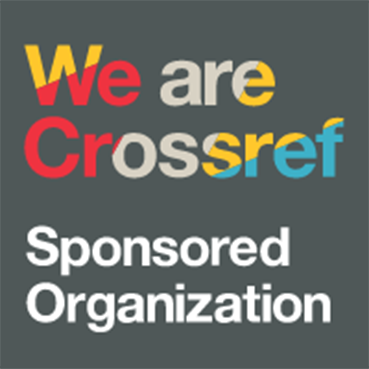Potensi Wakaf sebagai Investasi Sosial Masyarakat di Indonesia
DOI:
https://doi.org/10.47766/almabhats.v9i2.3358Keywords:
Economic Opportunities, Indonesian Potential, Islamic Economics, Poverty Alleviation, WaqfAbstract
Abstract: In the context of Islamic law, waqf is defined as a legal act involving the dedication of property by an individual to a person or institution, whereby the property is to be used for charitable purposes, with the core asset being permanent in nature. This concept offers greater flexibility compared to zakat, allowing waqf to evolve in response to contemporary needs while adhering to sharia principles. It is essential that the development of waqf remains within the bounds of sharia to uphold the values of ubudiyah (servitude to God) and iqtishadiyah (economic welfare). Indonesia possesses significant potential for waqf land; however, a considerable portion remains unproductive due to challenges related to funding and management. In response, the Indonesian government introduced sukuk-based waqf innovations in early 2017 to optimize the utilization of waqf land. Nevertheless, the legal framework surrounding sukuk remains a subject of scholarly debate and is characterized by differing opinions within Islamic jurisprudence. To effectively implement sukuk-based waqf, it is crucial to establish clear regulatory frameworks this financial innovation. Additionally, attention must be given to the proper administration of waqf assets, including land and building certificates, as well as waqf certificates. Ensuring compliance with sharia legality is paramount, as it allows the fundamental objectives of waqf to serve the community and enhance social welfare to be achieved without compromising the integrity or value of the waqf assets.
Abstrak: Wakaf adalah suatu ungkapan yang mengandung penahanan harta miliknya kepada orang lain atau lembaga dengan cara menyerahkan suatu benda yang kekal zatnya untuk diambil manfaatnya untuk kebaikan. Wakaf memiliki fleksibilitas yang lebih dibandingkan zakat sehingga bentuk wakaf akan terus berkembang sesuai dengan perkembangan zaman. Perkembangan wakaf tersebut tetap harus dalam koridor syariat sehingga nilai ubudiyah dan iqtishadiyah nya tetap ada. Potensi tanah wakaf di Indonesia yang begitu besar, menjadikan banyaknya tanah wakaf yang tidak produktif diakibatkan terbatasnya aspek pendanaan dan manajemen. Inovasi wakaf berbasis sukuk yang diluncurkan di awal 2017 oleh Pemerintah dalam rangka memaximalkan potensi tanah wakaf di Indonesia, hanya saja aspek hukum sukuk itu sendiri secara hukum masih khilafiah. Terlepas dari perbedaan pendapat dalam konteks fiqh ini, perlu diperhatikan aspek regulasi yang jelas yang melandasi wakaf berbasis sukuk ini, memperhatikan perapihan administrasi aset wakaf baik sertifi kat tanah dan bangunan maupun sertifi kat wakaf dan perlu diperhatikan aspek legalitas syariah agar tujuan utama wakaf untuk kemaslahatan umat tercapai tanpa mengurasi nilai ataupun wujud dari asset wakaf.
References
Acep Zoni Saeful Mubarok. (2020). Prospek Nazhir Wakaf Global Berbasis Pesantren di Era Digital. Jurnal Bimas Islam, 13(1), 23–50. https://doi.org/10.37302/jbi.v13i1.190
Alrashedi, M. Y., & Mohammed, M. O. (2023). Developing Social Financial Resources Model for Islamic Microfinance to Reduce Unemployment Rate (pp. 925–943). https://doi.org/10.1007/978-3-031-08084-5_67
Alshaleel, M. K. (2019). Islamic finance, sustainable development and developing countries: Linkages and potential. In Corporate Social Responsibility in Developing and Emerging Markets: Institutions, Actors and Sustainable Development (pp. 281–305). Cambridge University Press. https://doi.org/10.1017/9781108579360.016
Azwar Iskandar, Bayu Taufiq Possumah, K. A. (2020). Peran Ekonomi dan Keuangan Sosial Islam saat Pandemi Covid-19. Salam: Jurnal Sosial Dan Budaya Syar’i, 7(Keaunagn sosial islam), 625–638.
Dhuafa, D. (2019). Sepak Terjang 5 Lembaga Wakaf di Indonesia. https://zakat.or.id/sepak-terjang-5-lembaga-wakaf-di-indonesia/
Islām, A. (2018). Awqāf in South and Southeast Asia, 2018. Intellectual Discourse, 26, 983.
Ismail, M. H., dan Muamalah, F. P., bin Muhammad Som, H., Islam, A., Deni, M. I. M., & binti Sulaiman, M. (2015). Model Operasi Wakaf Pendidikan di Malaysia. Proceeding of International Conference on Cash Waqf (ICCW), 215–228.
Ismail, N. H. B. (2018). Validity Measurement of WAQF Related Research in Scopus Indexed Journals: A Rabbani Approach Analysis. The Journal of Social Sciences Research, SPI6, 376–381. https://doi.org/10.32861/jssr.spi6.376.381
Kamal, S., Safarida, N., & Kassim, E. S. (2024). Investigating the role of fiqh zakat knowledge in moderating the behaviour of the Acehnese to pay zakat digitally. Journal of Islamic Marketing. https://doi.org/10.1108/JIMA-02-2023-0055
Kasdi, A. (2015). Peran Wakaf Produktif dalam Pengembangan Pendidikan. QUALITY, 3(2), 433–452.
Lestari, W., & Thantawi, R. (2016). Efektivitas Pengelolaan Wakaf Tunai Di Badan Wakaf Indonesia. JURNAL SYARIKAH : JURNAL EKONOMI ISLAM. https://doi.org/10.30997/jsei.v2i1.291
Medias, F., Pratiwi, E. K., & Umam, K. (2019). Waqf Development in Indonesia: Challenges Faced by Muhammadiyah Waqf Institutions. Economica: Jurnal Ekonomi Islam, 10(2), 239–254. https://doi.org/10.21580/economica.2019.10.2.3333
Rozihan, R. (2022). The Dynamics of Waqf Asset Management in Indonesia. International Journal of Law Reconstruction, 6(1), 62. https://doi.org/10.26532/ijlr.v6i1.16294
Saptono, P. B., Khozen, I., & Jie, F. (2023). Obedience to Uli’l-Amr and Tax Compliance: Islamic Scholarly Perceptions. Journal of Islamic Thought and Civilization, 13(1), 103–118. https://doi.org/10.32350/jitc.131.08
Winarsih, R., Masrifah, A. R., & Umam, K. (2019). The Integration of Islamic Commercial and Social Economy through Productive Waqf to Promote Pesantren Welfare. Journal of Islamic Monetary Economics and Finance, 5(2). https://doi.org/10.21098/jimf.v5i2.1065
Yusroni, N., & Chadhiq, U. (2021). Understanding The Impact of Zakat and Waqf As Economic Development of The Community in Rural Areas. International Research Journal of Management, IT and Social Sciences, 8(6), 639–647.
Downloads
Published
How to Cite
Issue
Section
License
Copyright (c) 2024 Hanum Faradia, Habsiyah Asyidah

This work is licensed under a Creative Commons Attribution-ShareAlike 4.0 International License.





